Beddard, Frank E. 12 November 1907. "On Some Points in the Structure of Galidictis striata (Received October 17, 1907)." Proceedings of the Zoological Society of London 1907(4):803-817. Retrieved April 29, 2014.
- Available via Internet Archive at: https://archive.org/stream/proceedingsofzoo19074471121zool#page/802/mode/2up
Bisby, F.A.; Roskov, Y.R.; Orrell, T.M.; Nicolson, D.; Paglinawan, L.E.; Bailly, N.; Kirk, P.M.; Bourgoin, T.; Baillargeon, G.; and Ouvrard, D. (red.). 2011. "Genetta genetta." Species 2000 & ITIS Catalogue of Life: 2011 Annual Checklist. Reading, UK. Retrieved April 29, 2014.
- Available at: http://www.catalogueoflife.org/col/search/all/key/Genetta+genetta
Boelens, Bo; Watkins, Michael; and Grayson, Michael. 2009. The Eponym Dictionary of Mammals. JHU Press.
Boudet, Ch. 10 January 2009. "Species Sheet: European Genet." Mammals' Planet: Vs n°4, 04/2010. Retrieved April 29, 2014.
- Available at: http://www.planet-mammiferes.org/drupal/en/node/38?indice=Genetta+genetta
Boudet, Ch. 10 January 2009. "Subspecies Sheet: North African Genet." Mammals' Planet: Vs n°4, 04/2010. Retrieved April 29, 2014.
- Available at: http://www.planet-mammiferes.org/drupal/en/node/39?indice=Genetta+genetta+afra
Boudet, Ch. 10 January 2009. "Subspecies Sheet: [Ethiopian Genet]." Mammals' Planet: Vs n°4, 04/2010. Retrieved April 29, 2014.
- Available at: http://www.planet-mammiferes.org/drupal/en/node/39?indice=Genetta+genetta+albipes
Boudet, Ch. 10 January 2009. "Subspecies Sheet: Majorca Genet." Mammals' Planet: Vs n°4, 04/2010. Retrieved April 29, 2014.
Boudet, Ch. 10 January 2009. "Subspecies Sheet: [Moroccan Genet]." Mammals' Planet: Vs n°4, 04/2010. Retrieved April 29, 2014.
- Available at: http://www.planet-mammiferes.org/drupal/en/node/39?indice=Genetta+genetta+barbar
Boudet, Ch. 10 January 2009. "Subspecies Sheet: Barbary Genet." Mammals' Planet: Vs n°4, 04/2010. Retrieved April 29, 2014.
Boudet, Ch. 10 January 2009. "Subspecies Sheet: [Angolan Genet]." Mammals' Planet: Vs n°4, 04/2010. Retrieved April 29, 2014.
Boudet, Ch. 10 January 2009. "Subspecies Sheet: [Algerian Genet]." Mammals' Planet: Vs n°4, 04/2010. Retrieved April 29, 2014.
Boudet, Ch. 10 January 2009. "Subspecies Sheet: Neumann's Genett [sic], East African Genet, Small-spotted Genet." Mammals' Planet: Vs n°4, 04/2010. Retrieved April 29, 2014.
Boudet, Ch. 10 January 2009. "Subspecies Sheet: Feline Genet." Mammals' Planet: Vs n°4, 04/2010. Retrieved April 29, 2014.
Boudet, Ch. 10 January 2009. "Subspecies Sheet: [Galician Genet]." Mammals' Planet: Vs n°4, 04/2010. Retrieved April 29, 2014.
Boudet, Ch. 10 January 2009. "Subspecies Sheet: Common Genet, Mediterranean Genet." Mammals' Planet: Vs n°4, 04/2010. Retrieved April 29, 2014.
Boudet, Ch. 10 January 2009. "Subspecies Sheet: Arabian Genet." Mammals' Planet: Vs n°4, 04/2010. Retrieved April 29, 2014.
Boudet, Ch. 10 January 2009. "Subspecies Sheet: [Eastern Somalian, Cape Guardafui Genet]." Mammals' Planet: Vs n°4, 04/2010. Retrieved April 29, 2014.
Boudet, Ch. 10 January 2009. "Subspecies Sheet: [Harar Genet]." Mammals' Planet: Vs n°4, 04/2010. Retrieved April 29, 2014.
Boudet, Ch. 10 January 2009. "Subspecies Sheet: [Leiria's Wood Genet, Malaga Genet]." Mammals' Planet: Vs n°4, 04/2010. Retrieved April 29, 2014.
Boudet, Ch. 10 January 2009. "Subspecies Sheet: Ibiza Genet." Mammals' Planet: Vs n°4, 04/2010. Retrieved April 29, 2014.
Boudet, Ch. 10 January 2009. "Subspecies Sheet: [Lebata Genet, South African Genet, Transvaal Genet]." Mammals' Planet: Vs n°4, 04/2010. Retrieved April 29, 2014.
Boudet, Ch. 10 January 2009. "Subspecies Sheet: [Lusitanian Genet]." Mammals' Planet: Vs n°4, 04/2010. Retrieved April 29, 2014.
Boudet, Ch. 10 January 2009. "Subspecies Sheet: [Arabian Peninsular Genet, Kuwaiti Genet]." Mammals' Planet: Vs n°4, 04/2010. Retrieved April 29, 2014.
- Available at: http://www.planet-mammiferes.org/drupal/en/node/39?indice=Genetta+genetta+macrura
Boudet, Ch. 10 January 2009. "Subspecies Sheet: [Sierra Morena Genet]." Mammals' Planet: Vs n°4, 04/2010. Retrieved April 29, 2014.
- Available at: http://www.planet-mammiferes.org/drupal/en/node/39?indice=Genetta+genetta+melas
Boudet, Ch. 10 January 2009. "Subspecies Sheet: [Neumann's Genet, East African Small-spotted Genet." Mammals' Planet: Vs n°4, 04/2010. Retrieved April 29, 2014.
Boudet, Ch. 10 January 2009. "Subspecies Sheet: [Madrid Genet]." Mammals' Planet: Vs n°4, 04/2010. Retrieved April 29, 2014.
Boudet, Ch. 10 January 2009. "Subspecies Sheet: Southwestern Africa Genet, Murembwi Genet." Mammals' Planet: Vs n°4, 04/2010. Retrieved April 29, 2014.
Boudet, Ch. 10 January 2009. "Subspecies Sheet: Pyrenean Genet." Mammals' Planet: Vs n°4, 04/2010. Retrieved April 29, 2014.
Boudet, Ch. 10 January 2009. "Subspecies Sheet: Rhodanian Genet." Mammals' Planet: Vs n°4, 04/2010. Retrieved April 29, 2014.
Boudet, Ch. 10 January 2009. "Subspecies Sheet: Western Africa Genet, Senegal Genet." Mammals' Planet: Vs n°4, 04/2010. Retrieved April 29, 2014.
Boudet, Ch. 10 January 2009. "Subspecies Sheet: [Tigiglo Genet]." Mammals' Planet: Vs n°4, 04/2010. Retrieved April 29, 2014.
Boudet, Ch. 10 January 2009. "Subspecies Sheet: Palestine Genet." Mammals' Planet: Vs n°4, 04/2010. Retrieved April 29, 2014.
Boudet, Ch. 10 January 2009. "Subspecies Sheet: [European Genet]." Mammals' Planet: Vs n°4, 04/2010. Retrieved April 29, 2014.
Cabrera, Ángel. 1914. Fauna Ibérica: Mamíferos. Madrid: Museo Nacional de Ciencias Naturales.
"Common Genet." Mangolink-WebCams. Makarikari S.L. Retrieved April 29, 2014.
- Available at: http://www.mangolinkcam.com/information/common-genet.html
"Common Genet." redOrbit Reference Library Mammals. Retrieved April 29, 2014.
- Available at: http://www.redorbit.com/education/reference_library/animal_kingdom/mammalia/2578190/common_genet/
"Common Genet." RightPet: Exotic/Small Mammals>Exotic Mammals. Collective Wisdom Inc. Retrieved April 29, 2014.
- Available at: http://www.rightpet.com/Small-Exotic-mammaldetail/common-genet
"Common Genet." The Animal Files: Mammals>Carnivores. Retrieved April 29, 2014.
- Available at: http://www.theanimalfiles.com/mammals/carnivores/genet_common.html
"Common Genet (Genetta genetta)." ARKive: Species>Mammals. Retrieved April 29, 2014.
- Available at: http://www.arkive.org/common-genet/genetta-genetta/
"Common Genet: Genetta genetta." Tanzania Mammal Atlas Project: Mammals. Arusha, Tanzania: Tanzania Wildlife Research Institute: Tanzania Mammal Conservation Program. Retrieved April 29, 2014.
- Available at: http://www.tanzaniamammals.org/content/mammal.php?id=GT1
Corson, Docteur P.-J. October 2005. Les grands prédateurs d’Afrique: biologie, éthnologie et chasse. Brussels, Belgium: Éditions du Gerfaut.
Crawford-Cabral, J. 1981. “A New Classification of the Genets.” African Small Mammal Newsletter6:8-10.
Crawford-Cabral, João. 1980. "The Classification of the Genets (Carnivora, Viverridae, genus Genetta)." Boletim da Sociedade Portuguesa de Ciências Naturais 20:97-114.
Delibes, Miguel; Mézan-Muxart, Virginie; and Calzada, Javier. January 2013. “Albino and Melanistic Genets (Genetta genetta) in Europe.” Acta Theriologica 58(1):95-99.
Delibes, M.; Rodríguez, A.; and Parreno, F.F. 1989. “Food of the Common Genet (Genetta genetta) in Northern Africa.” Journal of Zoology 218(2): 321-326.
de Pousarges, E. (Eugène). 1896. "Étude sur les mammifères du Congo français." Annales des Sciences Naturelles, Zoologie et Paléontologie; comprenant l'Anatomie, la Physiologie, la Classification et l'histoire Naturelle des Animaux, (série 8, tome troisième): 129-416.
- Available via Biodiversity Heritage Library at: http://biodiversitylibrary.org/page/35662106
- Available via Internet Archive at: http://archive.org/stream/udesurlesmammifs00pous#page/n6/mode/1up
Driver, Stephanie (ed.). 2008. Exploring Mammals. Tarrytown, NY: Marshall Cavendish Corporation.
Duff, Andrew; and Lawson, Ann. 2004. Mammals of the World: A Checklist. Yale University Press.
Durant, S.M.; DeLuca, D.; Davenport, T.R.B.; Mduma, S.; Konzo, E.; and Lobora, A. (eds.). 19 – 21 April 2006. The Tanzania Small Carnivore Conservation Action Plan. Arusha, Tanzania: Tanzania Wildlife Research Institute.
- Available at: http://www.tanzaniacarnivores.org/uploads/Tanzania%20small%20carnivore%20conservation%20action%20plan%281%29.pdf
Ewer, R.F. 1998. The Carnivores. Cornell University Press: Cornell Paperbacks.
Fischer, Claude; Tagand, Romain; and Hausser, Yves. July 2013. “Diversity and Distribution of Small Carnivores in a Miombo Woodland within the Katavi Region, Western Tanzania.” Small Carnivore Conservation 48:60-66.
- Available at: http://www.smallcarnivoreconservation.org/home/wp-content/uploads/2013/08/SCC-48-6-Fischer-et-al.pdf
Gaubert, Philippe; and Dufour, Sylvain. July 2013. “First Report of a Chinchilla Phenotype in Viverridae (Carnivora).” Small Carnivore Conservation 48:92-95. Retrieved April 29, 2014.
- Available at: http://www.smallcarnivoreconservation.org/home/wp-content/uploads/2013/08/SCC-48-11-Gaubert-Dufour.pdf
Gaubert, P.; Chalubert, A.; and Dubus, G. 2008. “An Interactive Identification Key for Genets and Oyans (Carnivora, Viverridae, Genettinae, Genetta spp. and Poiana spp.) Using Xper2.”Zootaxa 1717:39-50.
Gaubert, P.; Fernandes, C. A.; Bruford, M. W.; and Veron, G. 2004. "Genets (Carnivora, Viverridae) in Africa: An Evolutionary Synthesis Based on Cytochrome b Sequences and Morphological Characters." Biological Journal of the Linnean Society 81:589-610.
Gaubert, P.; Papeş, M.; Peterson, A.T. June 2006. "Natural History Collections and the Conservation of Poorly Known Taxa: Ecological Niche Modeling in Central African Rainforest Genets (Genetta spp.)." Biological Conservation 130(1):106–117.
Gaubert, P.; Taylor, P.J.; and Veron, G. 2005. “Integrative Taxonomy and Phylogenetic Systematics of the Genets (Carnivora, Viverridae, Genetta): A New Classification of the Most Speciose Carnivoran Genus in Africa.” Pp. 371-384 in African Biodiversity: Molecules, Organisms, Ecosystems edited by Bernard A. Huber, Bradley J. Sinclair, and Karl-Heinz Lampe. NY: Springer Science + Business Media, Inc.
Gaubert, Philippe; Weltz, Marjorie; and Chalubert, Antoine. 14 January 2008. “Genetta genetta." Genets and Oyans. Paris: Université Pierre et Marie Curie. Retrieved April 29, 2014.
- Available at: http://lis-upmc.snv.jussieu.fr/genettes/web/fiches_en/taxa/genetta_genetta.html
Geiger, Diana. "Pet - Pet Genet." BellaOnline: Exotic Pets Site. Minerva WebWorks LLC. Retrieved April 29, 2014.
- Available at: http://www.bellaonline.com/articles/art173689.asp
"Genet." AWF: What We Do>Wildlife Conservation>Genet. African Wildlife Foundation. Retrieved April 29, 2014.
- Available at: http://www.awf.org/wildlife-conservation/genet
"Genetta genetta." European Nature Information System EUNIS Biodiversity Database Species. European Environment Agency. Retrieved April 29, 2014.
- Available at: http://eunis.eea.europa.eu/species/1409
"Genetta genetta." The Marine Biological Laboratory Universal Biological Indexer and Organizer NamebankID 2478469. Retrieved April 29, 2014.
- Available at: http://www.ubio.org/browser/details.php?namebankID=2478469
"Genetta genetta." The National Center for Biotechnology Information: Taxonomy ID94190. Retrieved April 29, 2014.
- Available at: http://www.ncbi.nlm.nih.gov/Taxonomy/Browser/wwwtax.cgi
"Genetta genetta (Genette Commune)." ZipcodeZoo: Species Identifier 5389. Retrieved April 29, 2014.
- Available at: http://www.zipcodezoo.com/animals/g/genetta_genetta/
"Genetta genetta genetta (Small-Spotted Genet)." ZipcodeZoo: Species Identifier 643789. Retrieved April 29, 2014.
- Available at: http://zipcodezoo.com/Animals/G/Genetta_genetta_genetta/
"Genetta genetta isabelae (Ibiza Common Genet)." ZipcodeZoo: Species Identifier 1018805. Retrieved April 29, 2014.
- Available at: http://zipcodezoo.com/Animals/G/Genetta_genetta_isabelae/
"Genetta genetta (Linnaeus, 1758)." ITIS Standard Report: Taxonomic Serial Number 621991. Integrated Taxonomic Information System. Retrieved April 29, 2014.
- Available at: http://www.itis.gov/servlet/SingleRpt/SingleRpt?search_topic=TSN&search_value=621991
"Genetta genetta: Small-spotted Genet." Encyclopedia of Life. Retrieved April 29, 2014.
- Available at: http://eol.org/pages/328095/details
Gervais, Paul. 1855. Histoire naturelle des Mammifères: Carnivores, Proboscidiens, Jumentés, Bisulques, Édentés, Marsupiaux, Monotrèmes, Phoques, Sirénides et Cétacés. Paris: L. Curmer.
Gittleman, John L.; Funk, Stephan M.; Macdonald, David; and Wayne, Robert K. (eds.). 2001. Carnivore Conservation. Cambridge University Press: Conservation Biology 5.
The Global Biodiversity Information Facility. 1 July 2013. "Genetta genetta (Linnaeus, 1758)." GBIF Backbone Taxonomy Species: Animalia > Chordata > Mammalia > Carnivora > Viverridae > Genetta GBIF ID 5219362. Retrieved April 29, 2014.
- Available at: http://www.gbif.org/species/5219362
Gray, John Edward. 1869. Catalogue of Carnivorous, Pachydermatous, and Edentate Mammalia in the British Museum. London: Trustees of the British Museum (Natural History). Retrieved April 29, 2014.
- Available via Internet Archive at: https://archive.org/details/catalogueofcarni00brit


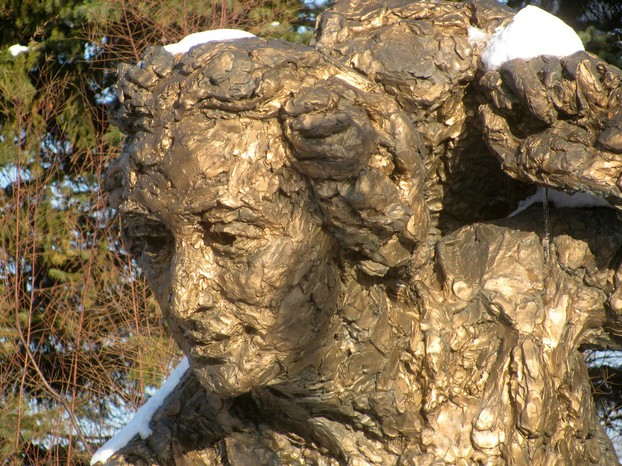
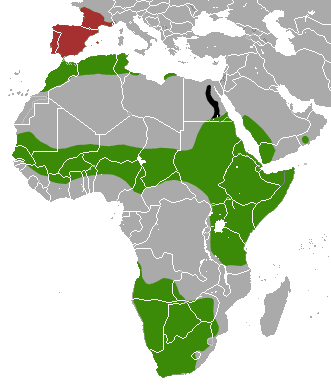
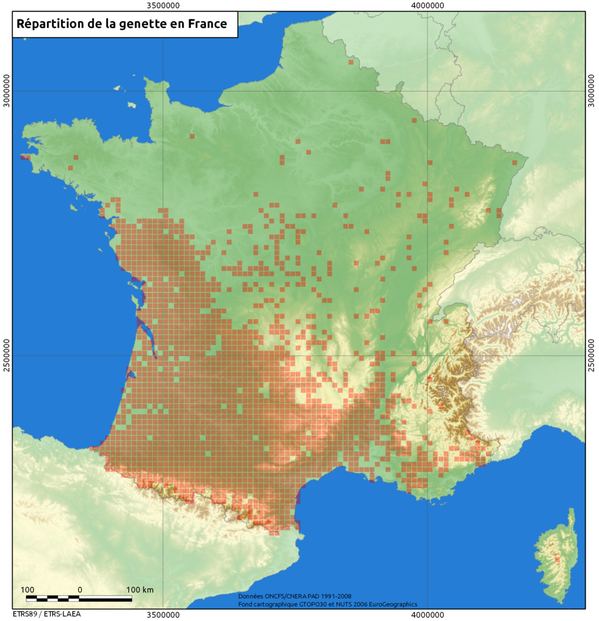
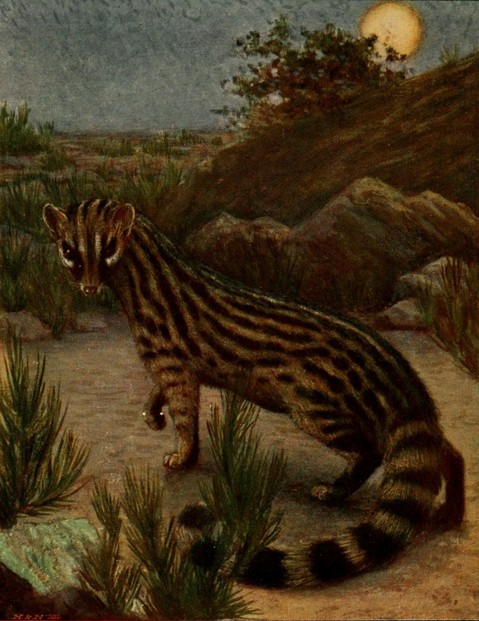
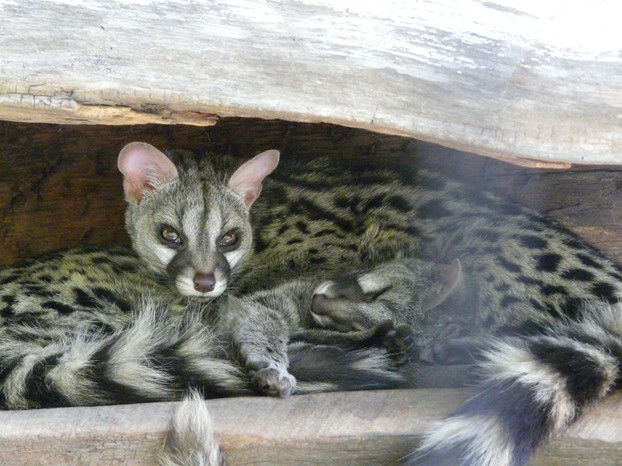
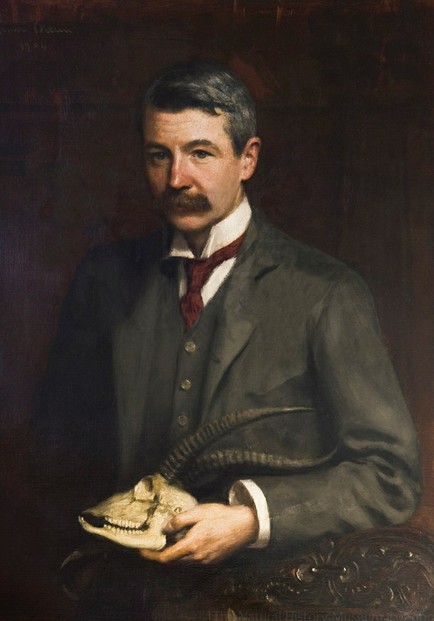
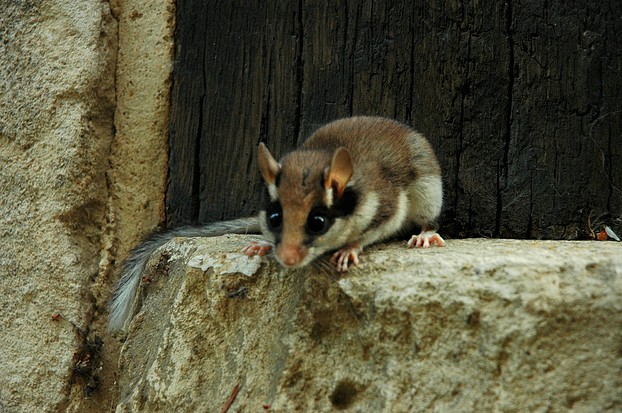
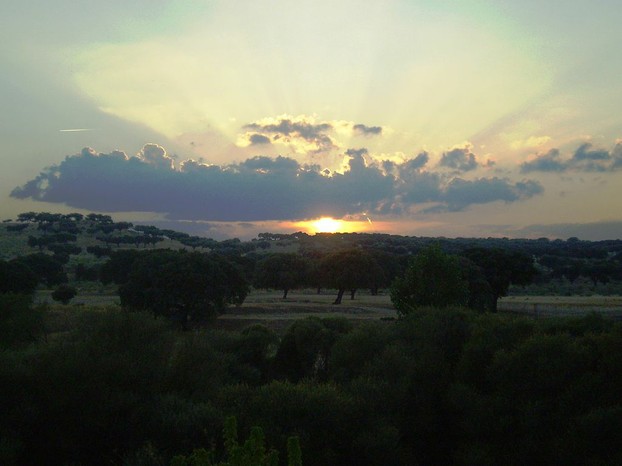
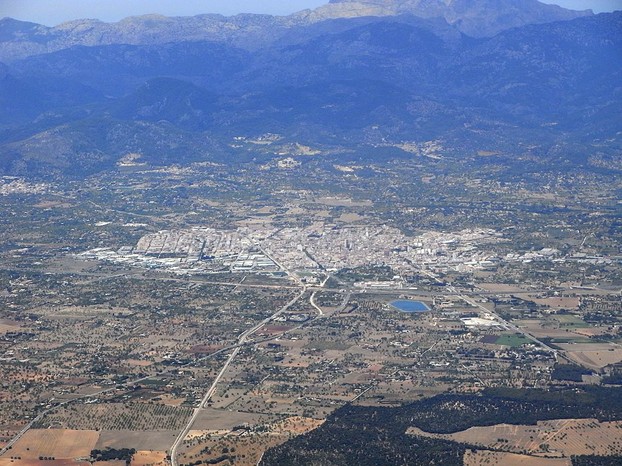
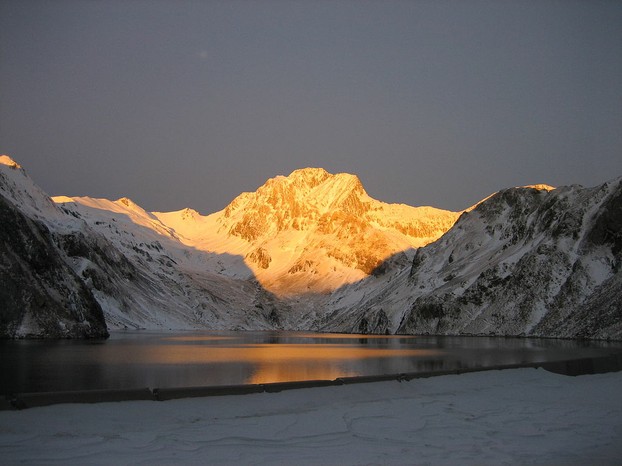




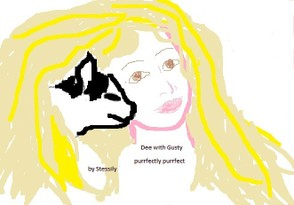
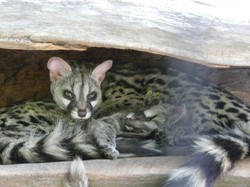

 Are Hawaiian Huakai Po Nightmarchers Avenging Halloween Thursday?on 10/02/2024
Are Hawaiian Huakai Po Nightmarchers Avenging Halloween Thursday?on 10/02/2024
 Mailing Addresses for 2023 Form 4868 Extending 1040 and 1040SR April 15, 2024, Due Dateon 04/15/2024
Mailing Addresses for 2023 Form 4868 Extending 1040 and 1040SR April 15, 2024, Due Dateon 04/15/2024
 Mailing Addresses for 2023 Forms 1040 and 1040SR Filed in 2024on 04/15/2024
Mailing Addresses for 2023 Forms 1040 and 1040SR Filed in 2024on 04/15/2024
 Mailing Addresses for 2022 Form 4868 Extending 1040 and 1040SR April 18, 2023, Due Dateon 04/13/2023
Mailing Addresses for 2022 Form 4868 Extending 1040 and 1040SR April 18, 2023, Due Dateon 04/13/2023

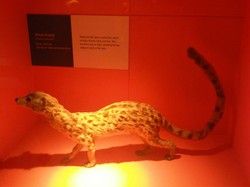
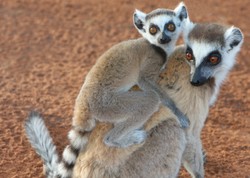
Comments